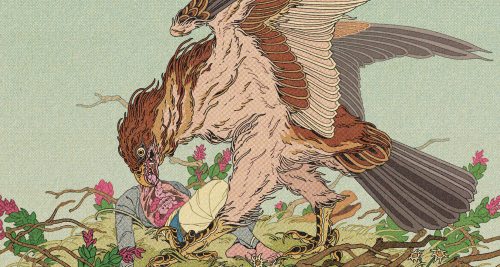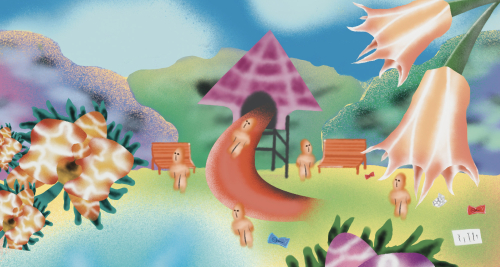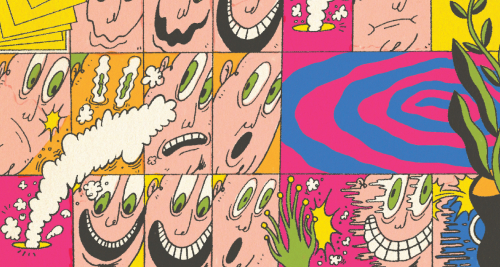A Guide to Measure Life in Points and the Story Behind Its D&AD 2025 Wood Pencil Win
A wave of celebrations swept through Indonesia’s graphic design communities as exciting news arrived from London. On May 22, 2025, during the D&AD Awards’ prestigious night, Studio Woork was awarded a Wood Pencil in the Typography / Publications category for their publication design entitled “A Guide to Measure Life in Points: The Second Edition”. D&AD described the publication as both a guide and a companion to select the right point size for the right medium, accessible for both designers and the general public.
Still basking in the afterglow of their win, Grafis Masa Kini sat down with Io Woo (Art Director) and Eugenius Krisna (Graphic Designer and Typographer) to uncover the journey behind the creation of A Guide to Measure Life in Points: The Second Edition to their victory at the D&AD Awards 2025.
“It only happened a few weeks ago, so I’m still not over the fact that we won,” Eugene said at the start of the conversation. To win a Wood Pencil at D&AD still feels surreal for both Eugene and Io. From the very beginning, the process of competing was filled with challenges that range from the complex administration of registration to the mental preparation of facing the uncertainty of the competition landscape, as participants are unaware of who they are competing against. So, when the good news of Studio Woork’s victory arrived, it took them by surprise and what followed was an immeasurable joy and gratitude amongst their team.

“D&AD is tough, and, well, we are just a small team from Indonesia,” Io humbly added. “But the spirit we wanted to bring was to show that Indonesia has a growing pool of talent that’s ready to be recognized internationally.” For Studio Woork, which is a relatively young studio in the country’s design scene, this achievement marks a significant milestone that proves age and ‘experience’ are not barriers to competing on a global stage; it is creativity and talent that matter most. “Hopefully, this is just the beginning, and there will be many more wins for Indonesian designers to follow,” Io said hopefully.
The road to D&AD was far from easy for Studio Woork. When asked how they decided to submit this particular project to such a high-profile competition, Eugene admitted to his initial feelings of doubt: “Honestly, I felt a bit insecure,” he confessed with a laugh. “At the time of submission, the Indonesian Association of Graphic Designers (ADGI) curated a selection, and about ten studios were chosen to be supported. Seeing the names of other studios submitting made me doubt whether we even had a chance, especially since this was our first time entering D&AD.”
On the other hand, Io had faith in the project from the very beginning. “When the time came to choose which project to submit, we considered what D&AD has always stood for: how design can make an impact. So, we had a look through all our projects and decided that this book was the one that had the most relevance and usefulness to the real world,” he explained. The second edition of A Guide to Measure Life in Points was created entirely from scratch by Studio Woork—from its custom in-house typeface design to the detailed print production. “The amount of effort we put into it made us feel that it truly deserved recognition,” Io added. Despite their initial insecurities, it was their belief in the book's quality and purpose that triumphed and led them to submission.
The book itself was born out of a practical need within the design studio’s workspace. Io recalled how the idea came from a simple problem: the amount of paper waste generated every time they did test prints for signage or other printed materials. “Imagine the waste produced from how much is being thrown away every year,” he said.
The first edition of the book was initially designed for internal use. But news spread of its existence until it eventually built strong interest amongst the local design community and led to its second edition’s public release. That initial ‘test-run’ had laid the groundwork for a more thorough approach to publishing its second edition: “We talked to a lot of other designers too, asking what was missing in the first edition. From there, we tried to fill in all those gaps,” Io explained.

One of the most significant upgrades in this second edition lies in its typography. With a new custom-designed typeface by Eugenius Krisna, Studio Woork introduced Apple & Worm Sans, created specifically for large-scale print applications. “The largest size we included goes up to 600 points, which is more than enough for signage or wayfinding systems, whether indoors or outdoors,” Eugene said. This expanded range became a unique selling point for the second edition, particularly when compared to the first, which was more focused on standard printed formats, such as books and posters. Now, the guide serves a broader function—supporting the growing needs of designers working in environmental and spatial design.
More than just a manual for professional designers, Io and Eugene emphasized that the project was also intended for a wider audience, including those unfamiliar with typography. Studio Woork dedicated a section of the book to explain the fundamentals of typography—terminology, letter anatomy, and common industry terms that might be unfamiliar to those outside the design world. “We wanted this book to be accessible to anyone, even those who are just curious or starting to learn about typography and design,” said Eugene. This approach highlights how Studio Woork pursued not only aesthetic excellence but also educational value.
In terms of design, the book adopts a straightforward visual approach—no unnecessary decoration so to retain the clarity of focus on the typography and content. “The look is clean, easy to read, and easy to understand,” said Io. This aligns with the book’s core mission: efficiency, not just in terms of time and labor, but also in materials and environmental footprint.
The success of A Guide to Measure Life in Points: The Second Edition is something to be celebrated by Indonesia’s design community—not only for its international recognition, but also for what it represents: that Indonesian graphic design is finding its place on the global stage. And for now, Studio Woork has helped pave our way.
















